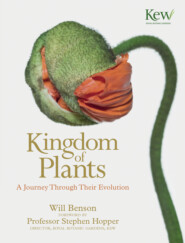
Полная версия:
Kingdom of Plants: A Journey Through Their Evolution


Kingdom of Plants
A Journey Through Their Evolution
Will Benson
FOREWORD BY Professor Stephen Hopper
DIRECTOR, ROYAL BOTANIC GARDENS, KEW

Contents
Title Page
Foreword by Professor Stephen D. Hopper
Kingdom of Plants 3D with David Attenborough
Chapter One: The Evolution of Plants
Chapter Two: The Wonder of Flowers
Chapter Three: Form and Function of Plants
Chapter Four: How Plants Have Shaped the World
Chapter Five: Plant Communication
Chapter Six: Plants and Animals
Chapter Seven: Extreme Survival
Chapter Eight: The Power of Fungi
Chapter Nine: No Plants, No Humans
Acknowledgements
Searchable Terms
Copyright
About the Publisher
Foreword by Professor Stephen D. Hopper
Plant diversity underpins most life on Earth, including ours. Plants provide the oxygen for every breath we take. Think of our daily ingestion of water and food, staying healthy through medicines, living comfortably in buildings, the joys of music, reading, gardening, farming, growing trees and exploring nature.
This book reveals some of the wonders of the plant world, exploring scientific information on the evolution of plants, the wonder of flowering plants, their diverse form and function, and their vital place on Earth. Stories abound of plants having a profound impact on our planet throughout evolutionary history, right up to the present day of unprecedented global change.
It is thrilling for me to revisit this great journey in these pages, from the remarkable evolution of photosynthesis in primeval oceans to the great move onto land through the evolution of desiccation-tolerant plant bodies, pollen and seeds. Who could not marvel at the diversity of the world’s estimated 400,000 flowering plants? Few are not moved by the sheer beauty and intellectual challenge of understanding how such rampant life came to be. This book eloquently tells that story in an accessible up-to-date text.
For those whose interest is more excited by practical uses or the conduct of human affairs, there is much food for thought here as well. Apart from providing us with oxygen and moderating our climate, we learn that plants form a rich foundation for the web of life, and touch the lives of all people in every nation.
A special appeal of this book is its celebration of plant scientists and the insights they continue to bring. Charles Darwin devoted the best part of his last 20 years to the experimental study of plants, realising their value in illustrating evolution by natural selection, and publishing more books and journal pages on plants than on his more celebrated works in geology and zoology. Today, there are more plant scientists alive than ever before, and their discoveries in the field and laboratory are just as compelling.
Much remains to be done in the exploration of plant diversity. We are still discovering and naming 2000 new species of plant on Earth each year, from rainforest trees to colourful shrubs and orchids of temperate climates (especially in the southern hemisphere). Plant diversity unquestionably underpins human existence and livelihoods, yet we continue to destroy it at an alarming rate, with one in five plant species recently estimated to be under threat of extinction.
In our rapidly changing world, we are at a turning point for plant diversity. Without a fundamental shift towards more active conservation and the sustainable use of plants, our prospects for the future are grim indeed. Communicating this message in exciting and innovative ways to mass audiences remains essential. I am delighted that the Royal Botanic Gardens, Kew, has collaborated recently with Sir David Attenborough and Atlantic Productions in providing the plants and location for the astonishing series Kingdom of Plants 3D. I commend this programme and this beautifully produced book to all those who share a sense of wonder in plants and an appreciation of their central place in the lives of all on our one breathing planet.
Professor Stephen D. Hopper
Director (CEO & Chief Scientist)
Royal Botanic Gardens, Kew
April 2012
Kingdom of Plants 3D with David Attenborough
‘Watching flowers develop and insects visiting flowers is always wonderful to see, but in 3D it becomes transcendental. Seeing this happen in such depth gives you a most extraordinary, vivid impression. It’s unforgettable.’
- David Attenborough

To preview the Kingdom of Plants app, scan the code above, and embark on your own journey with David Attenborough as he uncovers the hidden realm of plants at Kew.
This book, which explores both the splendour and diversity of the world of plants, was written to accompany the landmark television series Kingdom of Plants 3D with David Attenborough, produced by Atlantic Productions for Sky3D. Using cutting-edge stereoscopic cinematography, this revolutionary 3D project follows David Attenborough in his 60th year of broadcasting, as he uncovers the most amazing spectacles of the botanical world. Filmed over one year at the Royal Botanic Gardens, Kew, this series captures time-lapse footage of flowers as they burst into bloom, captivating interactions between plants and insects in microscopic detail, as well as snapping carnivorous plants and mystifying orchids – all filmed for the first time in three dimensions. Discover how plants first began to live on land, and how they have come to fill their place in the natural world today.
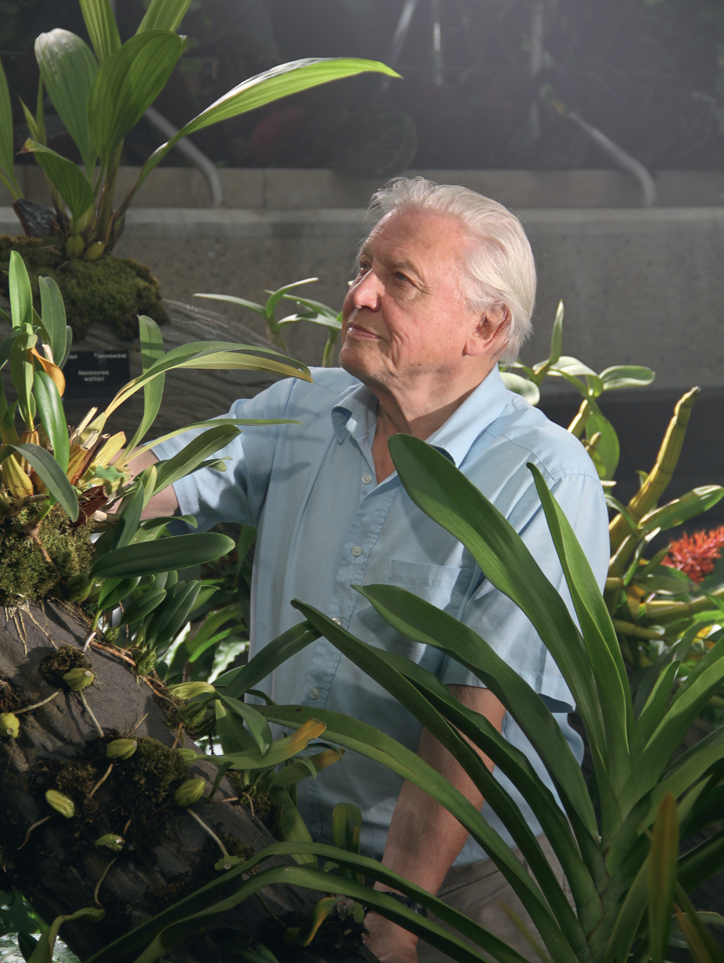
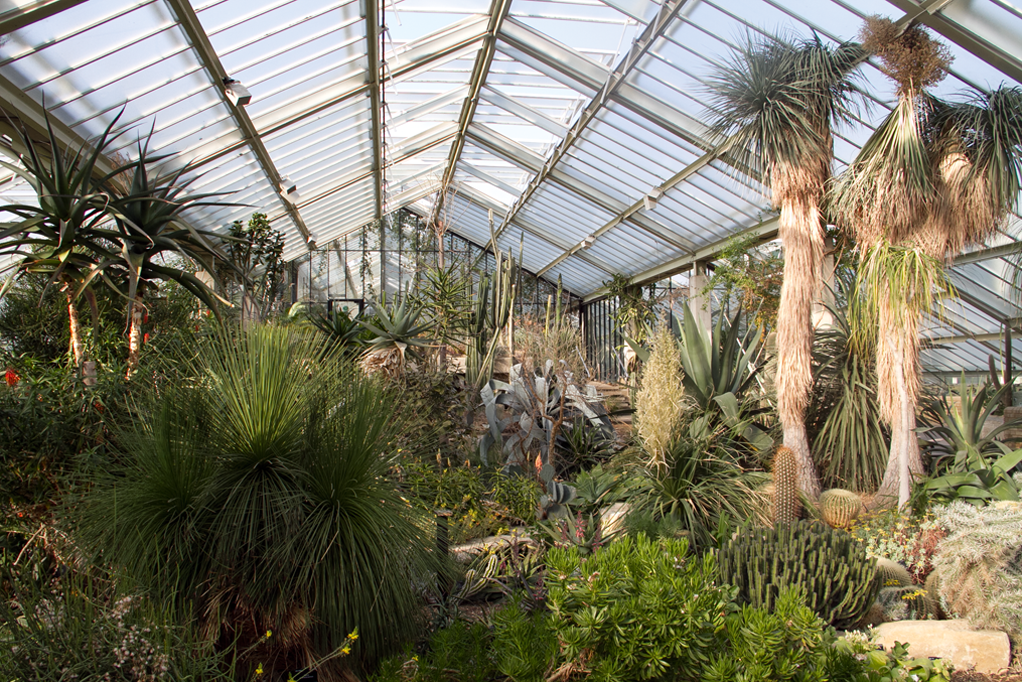
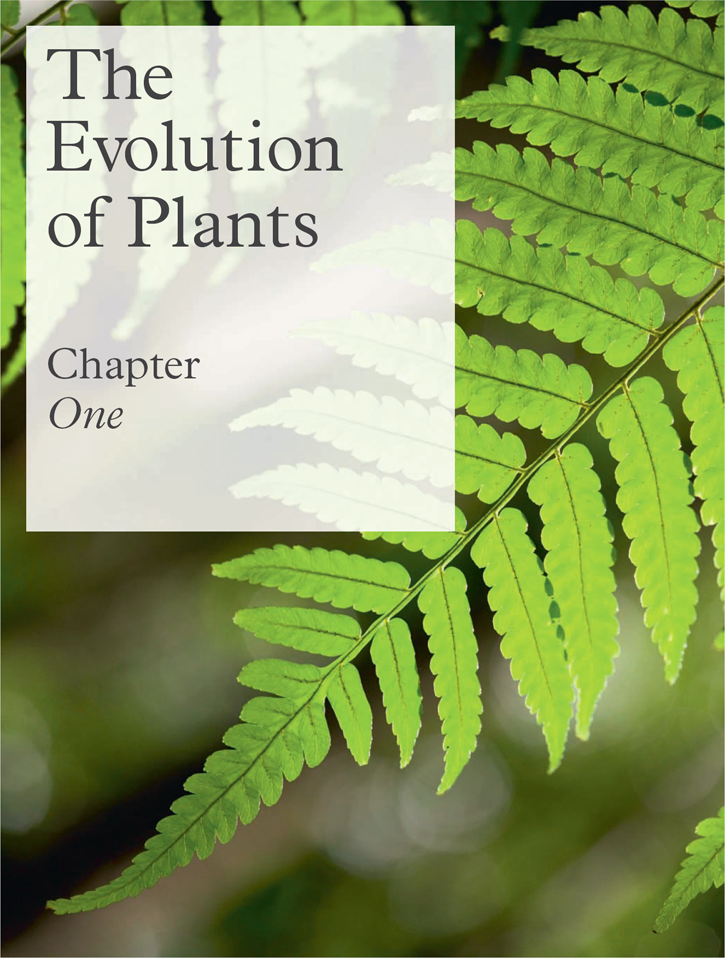
© RBG Kew
‘With the spread of plants onto land, their shapes and sizes soon began to diversify.’
In the last five hundred million years, plants have undertaken an epic evolutionary journey that has altered the very make-up of the planet. This journey began in a dark and acidic world and continues today in a world of rich colours, ornate shapes and mesmerising smells.
Every single step of their incredible evolutionary journey has been integral to creating the world we live in today. It is only by pulling apart the threads which create this rich network of flora that we can begin to uncover the extraordinary ways in which plants have come to live and thrive in all environments.
From their humble beginnings plants have become progressively complex and increasingly important to life on Earth. It is only through the success of the plant life on our planet that the animals that walk the Earth can be supported and it is the success of plants that has allowed humans to exist. Ultimately it is plants that will secure a place for our species to exist long into the future.
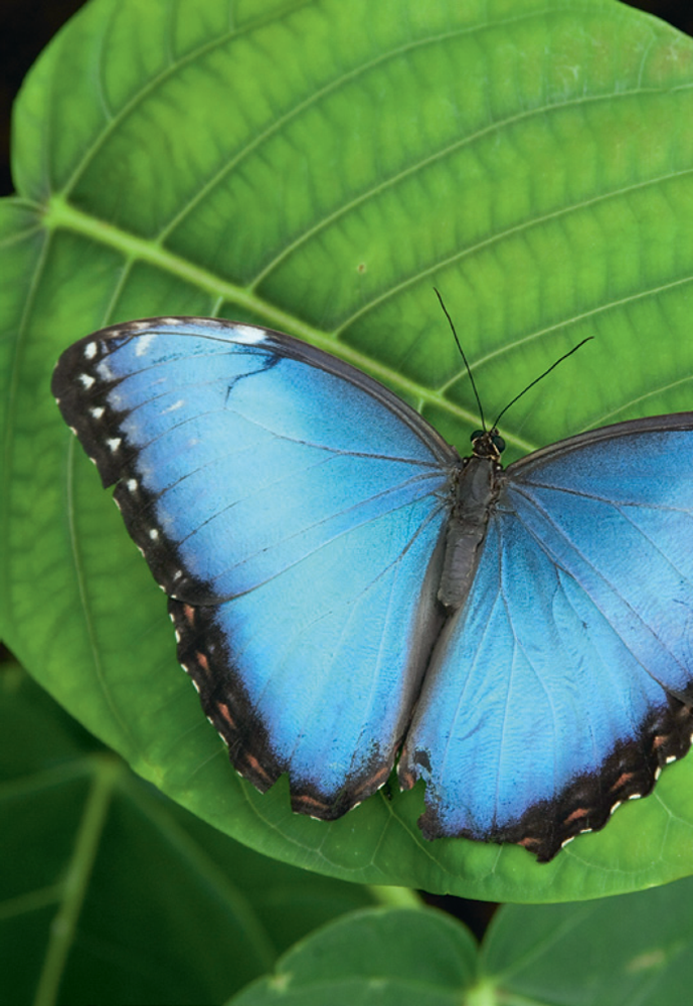
Blue morpho (Morpho peleides)
Plants today help support vast ecosystems of interconnected species.
© RBG Kew
Over millions of years plants have become increasingly defined and specialised, carving out their own niches on the surface of the planet; each one striving for the evolutionary equivalent of the limelight – a chance to reproduce and spread their genes. In the beginning of the journey we uncover the origins of photosynthesis, an elegant mechanism which revolutionised the way organisms could obtain energy, providing a powerhouse through which plants could grow and compete. In the next step, plants make a crucial leap out of their watery beginnings, as they moved onto the land. But it is from here that the botanical world really came into its own. Plants became tough and tall, developing structural wood that allowed them to reach new heights. They developed mighty anchoring roots and broad, air-pumping canopies. Skipping forward a few hundred million years we meet the rise of the first flowers, signalling the beginning of a great and ground-shaking love affair between insects and plants, setting in motion a course of events that would bind some plants to the animal world. From this point, the pace of the story picks up as we enter the age of rich biodiversity and intricate connections between Earth’s flora and fauna; we discover the extraordinary relationships between plants and animals, and we see that from one form of simple plant, many millions of diverse species have now evolved. And yet the most crucial chapters in the story of plants are still being written
From the early 1800s onwards countless expeditions set off to chart new territory and to collect rare and beautiful botanical specimens with which to fill elaborate glasshouses. This was to be the golden age of plant hunting, and with it began humankind’s fascination with the plant world. Today the spirit of these first pioneers remains in the world’s premier botanical gardens and research institutes. The biologists and ecologists who populate these centres have provided us with a far greater understanding of our planet’s biodiversity than ever before. Ultimately it is these botanists and conservationists who will ensure the survival of the world’s plant species.
* * *
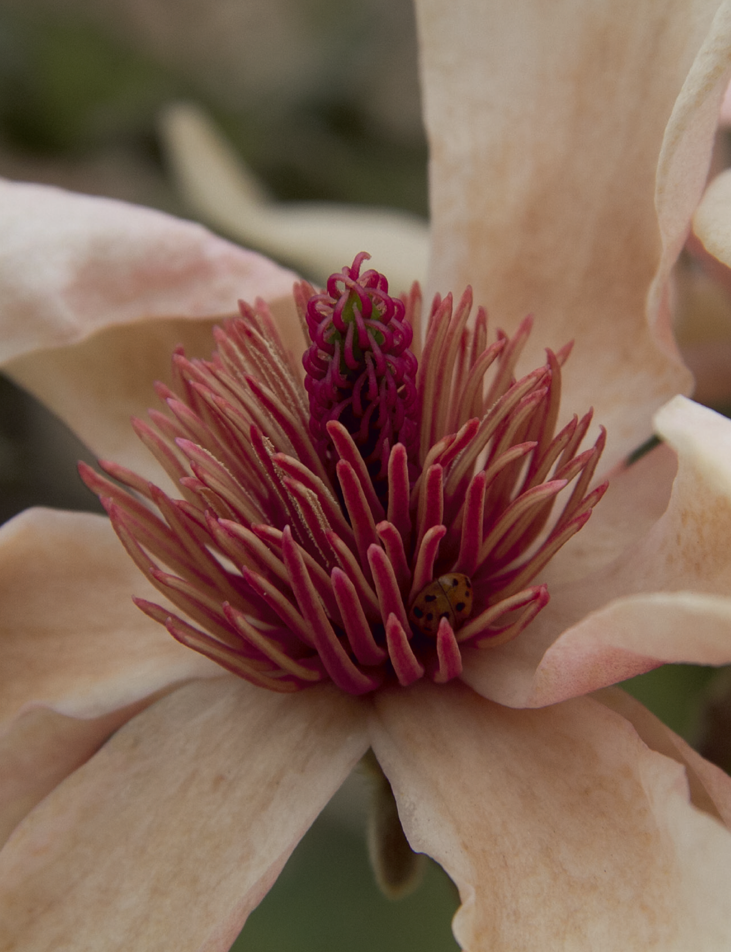
Magnolia sp.
One of the many species that were brought to Europe and are now common.
© Will Benson
To discover the origins of the plant kingdom we have to visit the Earth three billion years ago. At this time a dark gas-filled sky looms ominously overhead, the air is thick and acrid from the smouldering funnels of volcanic activity, and the waters of warm, shallow tropical seas lap at the shores of recently formed magma islands. This is a time we know now as the Archaean eon. In the watery depths of these ancient oceans tiny single-celled organisms drifted through the murky sediments of the seas. These basic microscopic cells were early bacteria, and consisted of nothing more than a simple outer membrane containing just a few primitive proteins inside. Over time, these cells grouped together to form layers of slime across the ancient seabed.
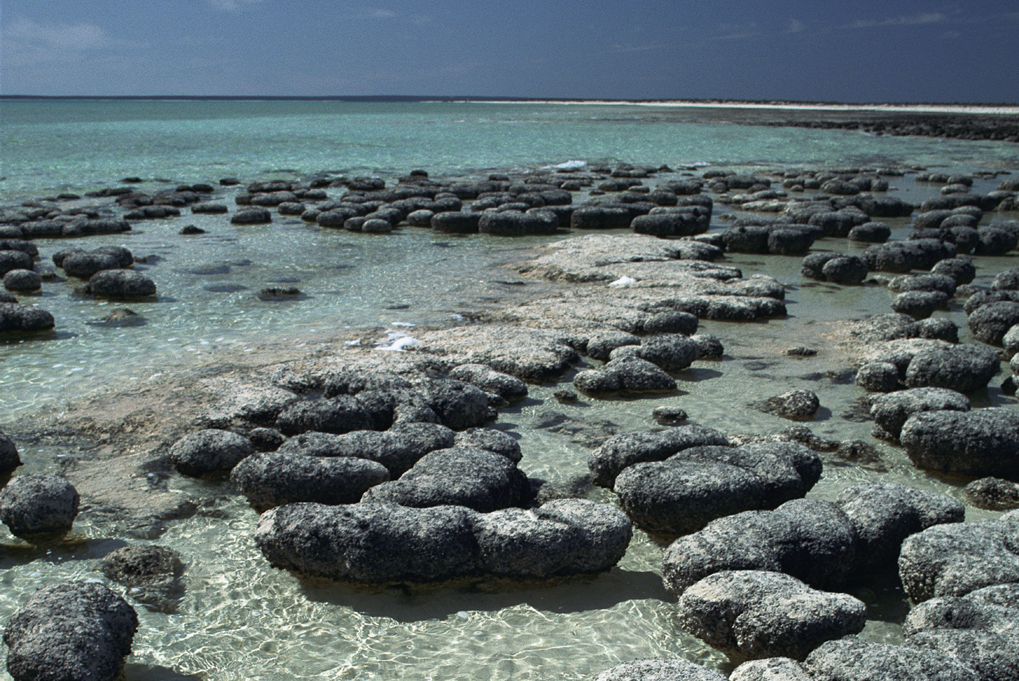
Stromatolites
These fossils in Australia’s Shark Bay represent the earliest known life forms on Earth.
© Minden Pictures/SuperStock
These bacteria survived by absorbing near-infrared light from the sun’s rays that penetrated the ancient atmosphere. This light was used to convert the carbon dioxide and hydrogen-based organic chemicals that they had ingested from the water into sulphates or sulphur, providing them with nutrients. Although this basic chemical conversion may seem simple and insignificant, it was in fact the origin of all plant life we see on our planet today. This chemical conversion is the mechanism which all species of plant and animal on Earth, either directly or indirectly, now use as their ultimate source of energy. This was photosynthesis – the use of the light energy to manufacture vital organic food.
The first photosynthetic bacteria had bundles of light-absorbing pigments enclosed within their cell walls. These pigments were called bacteriochlorophylls, the predecessors of chlorophyll. The ability for these early cells to use energy from the sun to create organic compounds and sugars which could then be used for growth and movement was a major step forward in evolutionary terms. No longer would these Archaean bacteria be confined to absorbing the mere chemical scraps of nutrients available in the sediment. With their gradual radiation throughout the Archaean seas, the bacteria developed and adapted, and over hundreds of millions of years they evolved significantly.
Then, around 2.7 billion years ago, there emerged a further advance in these organisms’ energy-exploiting capabilities. Alongside the early bacteria, new cells appeared – the cyanobacteria. Now while the early bacteria were making use of the ‘invisible’ near-infrared light from the sun, the structure of the pigments in the cyanobacteria’s light-absorbing machinery had evolved to absorb visible light as a means of breaking down chemical compounds to produce food. To help them absorb this visible light even more efficiently they developed a far more varied range of photosynthetic pigments, called phycobilins and carotenoids, as well as several forms of what we know today as chlorophyll.
With the change in the wavelengths of light that these new pigments were able to absorb came a change in the precise chemicals that they could digest. For over 300 million years since the rise of photosynthetic bacteria, the by-product of photosynthesis had been sulphurous gases, but in the case of cyanobacteria the by-product was a simple yet vital molecule – oxygen.
So successful were the oxygen-pumping cyanobacteria in the prehistoric world that great colonies of them, many billions of cells strong, are now found fossilised in the layers of sediment which were laid down during the Archaean and Proterozoic eons. This record of life, captured as it was over two billion years ago, marks a critical juncture in Earth’s history. As the cyanobacteria went about their business absorbing carbon dioxide from the sea and churning out oxygen into the water, some of this oxygen began to make its way up into the atmosphere, where it accumulated in great clouds, many thousands of tonnes in weight. At the same time – and for reasons still not conclusively known – others gases such as hydrogen began to decrease in the atmosphere. Crucially, this reduction in atmospheric hydrogen allowed oxygen to start accumulating.
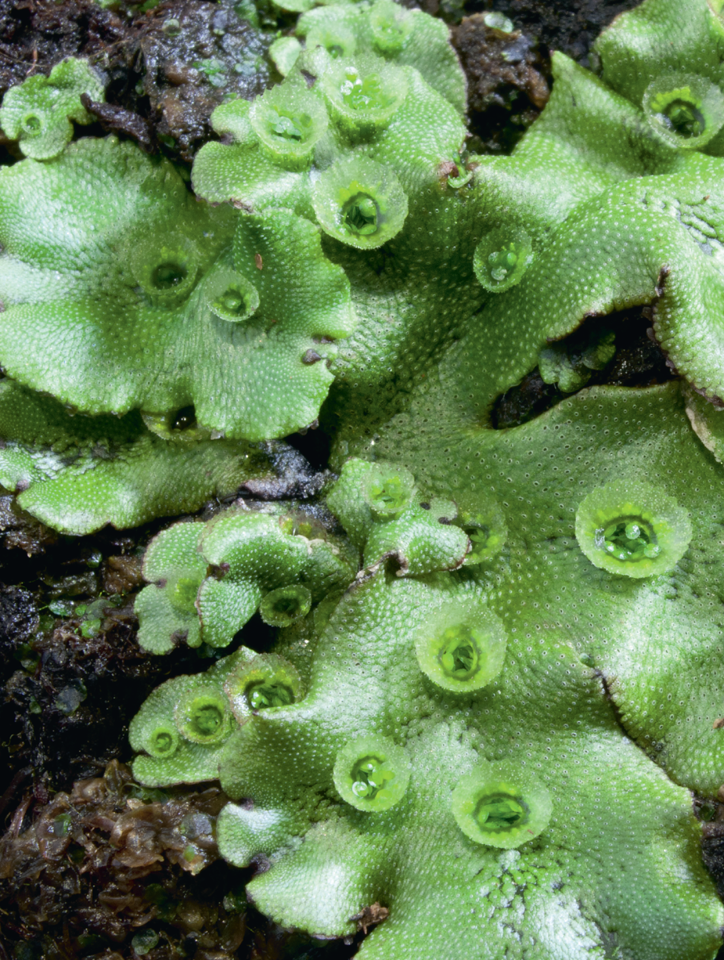
Liverworts
These may be the closest living relatives to the first plants to live on land.
© Tim Shepherd
Although they are not technically plants themselves, this so-called Great Oxidation Event earns cyanobacteria their place on the plant wall of fame. Oxygen is the third most abundant element in the entire universe, but until the intervention of these simple bacterial cells, Earth’s oxygen atoms were predominantly locked up in chemical relationships with other elements. Elemental oxygen is so chemically reactive that whenever it gets the chance it will bond to nearly any other available molecule, and in the Archaean and Proterozoic eons, there was certainly no shortage of available hydrogen, sulphur and carbon which it could bind to, creating water (H2O), sulphur dioxide (SO2) and carbon dioxide (CO2). But, critically, what cyanobacterial photosynthesis did was to split single oxygen atoms away from water molecules by using energy from sunlight, and then join two lone oxygen atoms together. By forming a partnership with an identical atom, these pairs of oxygen (or O2, as you’ll know them) had alleviated their want to bond to other chemicals through partnering up with one of their own. For the first time oxygen existed in a stable state, and this meant it could begin to increase in the atmosphere.
From the point, two billion years ago, at which cyanobacteria first began to produce significant amounts of oxygen by photosynthesis, it still took a further billion years for the levels of oxygen to reach even half of what they are today. Around 1.6 billion years ago, during the mid-Proterozoic eon, oxygen had risen to comprise about 10 per cent of the Earth’s atmosphere, and by now the cyanobacteria had been joined by a host of varied photosynthesising life. These were the red algae, brown algae and green algae, and for the next 500 million years the soft and slimy, filamentous bodies of these organisms thrived in the oceans of the prehistoric world. As these algae evolved, they increased in complexity, developing advantageous new adaptations. Some developed multiple and specialised cells, allowing them to absorb nutrients and sunlight more effectively, and by dividing labour to different cells their growth and reproduction became more streamlined. Coupled with this, the various different algae packaged their genetic material into a single central nucleus, which distinctly separated them from earlier photosynthetic life. Unlike the cyanobacteria before them, these algae were among the first eukaryotic life forms, made of the type of complex cells that make up all higher life on Earth today. Most importantly, their light-absorbing chlorophyll pigments became stacked and enclosed within a double cell membrane, creating the self-contained photosynthetic structures we know from plants on Earth today. These are called plastids, or when in green algae and plants, chloroplasts. These relatively basic but increasingly ingenious organisms, although still confined to their aquatic habitat, first began to embody what we now recognise as the first plant life on Earth.
The vast colonies of red algae (whose colours actually ranged from green to red to purple to greenish black) stretched across the ocean floor, where they absorbed the shorter wavelengths of light that penetrated the murky depths. Brown algae soon became adapted to rocky coasts, attaching themselves to submerged rocks by structures called holdfasts. Crucially, green algae acquired an advantage that enabled them to thrive in the shallow waters of land formations. Unlike most other algae, green algae (known as Charophyceae) are able to survive, and even flourish, in the strong light of exposed shallows. There are very few fossilised remains of the marine algae of this time, as their bodies were soft and easily broken down when they died. The exact stages that they underwent as they moved closer to land are unknown. However, we can deduce that around 500 million years ago green algae from the marine habitats and freshwater lakes washed ashore and became stranded on land. Some of these would have given rise to the first land plants. The earliest trace of plants on land that is recorded in the geological record is of the reproductive spores of a plant from the Ordovician period, some 470 million years ago. Analysis of these spores has revealed tiny structures which resemble those seen in a type of modern-day primitive plant called a liverwort.
The Palaeozoic era, which literally means the age of ‘ancient life’, stretched from 543 million years ago to 251 million years ago. From this time onwards scientists have been able to trace individual groups of early life. Around 500 million years ago, in a period within the Palaeozoic called the Cambrian, oxygen levels in the oceans dropped drastically, causing a condition called anoxia, which soon spread across the planet. This may have been the trigger for algae to move from water to land. Many of the free-floating, bottom-dwelling organisms in the sea were killed, and this locked away thousands of tonnes of organic matter in their decaying bodies. As a result, the photosynthetic plankton increased in numbers to exploit the space and the nutrients, and they began to pull great quantities of carbon dioxide out of the atmosphere, in turn releasing large amounts of oxygen. Over a period of a few million years oxygen levels rose from around 10 to 18 per cent, up to as high as 28 per cent. This level has since fluctuated over subsequent geological history, resting today at about 21 percent. So successful were the photosynthetic plankton that they still fill all corners of our oceans today. Just a single drop of water from the top 100 metres of the oceans will contain many thousands of these free-floating organisms. They are still considered to be some of the most important producers of organic matter on Earth.
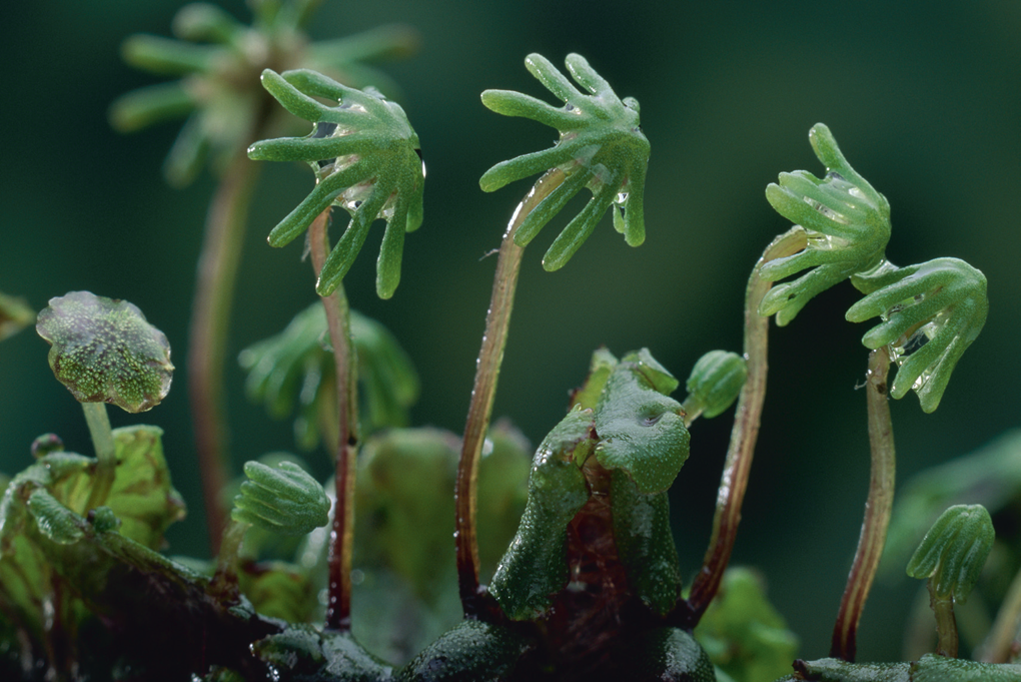
Marchantia polymorpha
With no internal vascular system, liverworts rely on a moist external habitat.
© Tim Shepherd
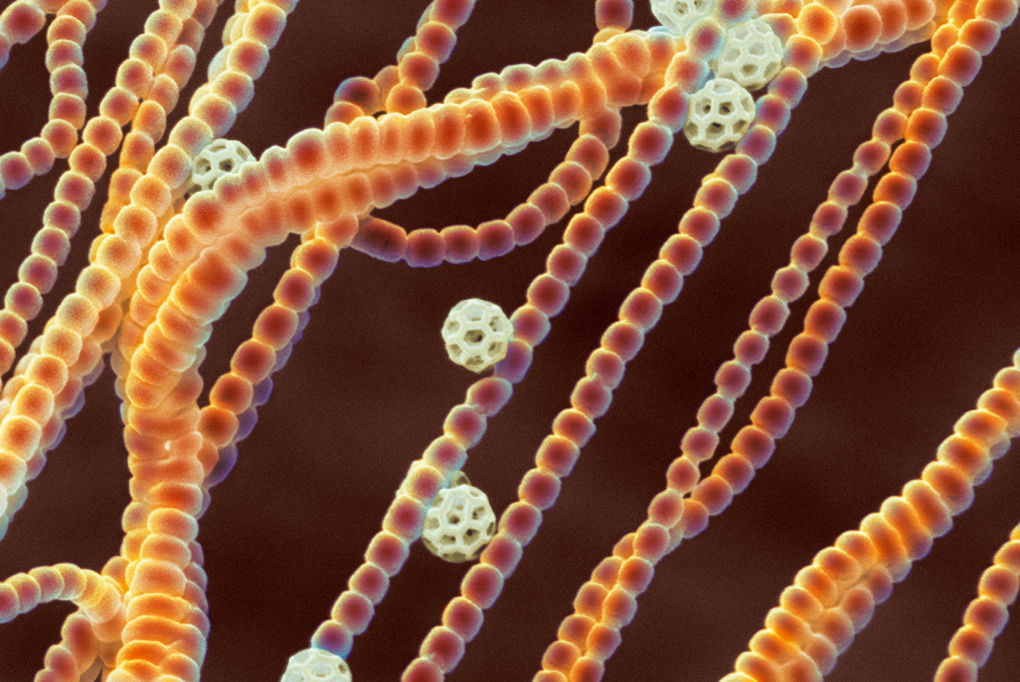
Cyanobacteria
These ancient microbes were the first to produce oxygen by photosynthesis.
© Science Photo Library/SuperStock
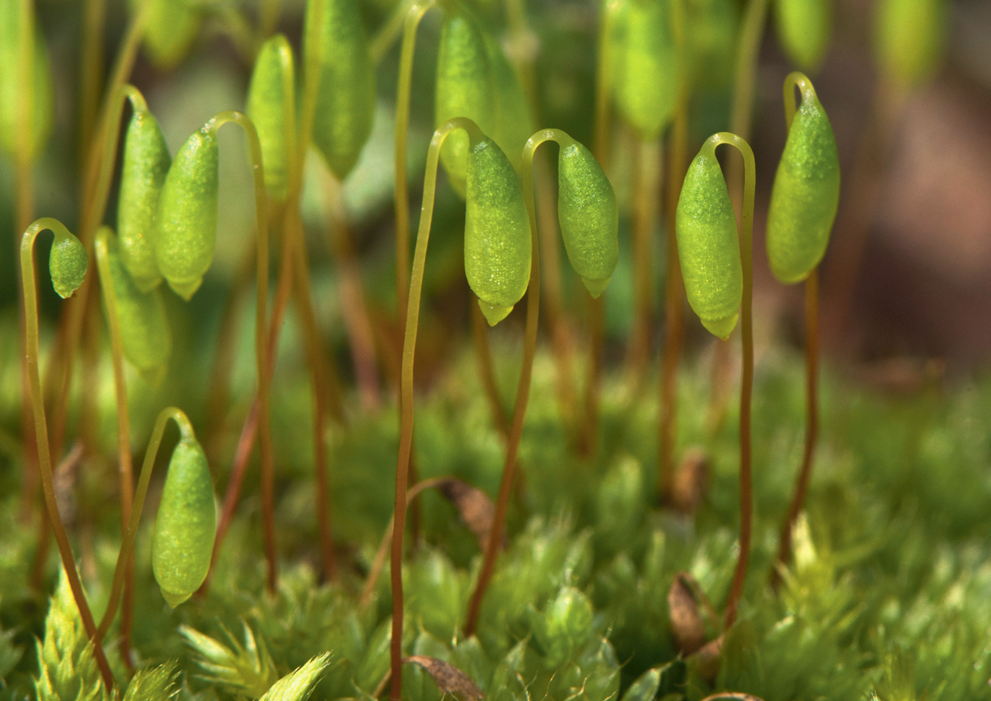
Bryophyte spore capsules
Even on land these plants require a partially wet environment for reproduction.
© Travel Library Limited/SuperStock
Alongside the oxygen released from the oceans, the first land-based plants further increased the amount of oxygen that accumulated in the atmosphere. When the concentration eventually tipped over the crucial 13 per cent mark, the first wildfires became possible, and sparks caused by rock-slides and lightning set huge areas of the ancient landscape alight. Fossilised bands of these charcoaled plants, 430 million years old, have been found today. With an abundance of oxygen now readily available out of the water, and with competition for space and resources under the water increasing, life on land became a more favourable option. But while their soft, moist bodies were well suited to an aquatic life, the warm, dry air would cause their thin cell walls to quickly desiccate. More so, water was still necessary for their reproduction, in order to combine their male and female gametes.
Over a period of many hundreds of thousands of years, mutations occurred in the cells of some algae which gave them a chance to live further away from the safety of the aquatic environment. A waxy cuticle developed by some algae helped them resist desiccation, and gradually a layer of cells evolved to form a capsule around the embryo to protect it from exposure to the dry air. In time these desiccation-proofed algae reproduced, giving rise to plants better prepared to live out of water. While large blooms of green algae remained water-bound in lakes and oceans, those which had evolved to live for periods outside the water soon began to lose resemblance to their algal ancestors. The bryophytes, as they are now known, became the first land plants on the planet.
Even with their adaptations to terrestrial life, these small green hair-like bryophytes, which we now divide into the mosses, hornworts and liverworts, were still reliant on water, in the form of moisture from swamps and bogs, or dew. As they had only recently left their aquatic environment, in evolutionary terms at least, the bryophytes lacked the ability to carry water and nutrients from the soil to their upper parts, and therefore relied on their bodies to be covered in moisture. Once inside their cells the water had to then pass from cell to cell by the slow process of diffusion. As a result of this, even after 450 million years on Earth, bryophytes have remained small and inconspicuous, confined to the dark, damp habitats. Whereas the lives of their marine ancestors were largely commanded by the ocean currents, the first bryophytes developed primitive root-like structures, allowing them to be anchored to the soil. However, not only were the bryophytes key to all land plants we see today, they are now the third most diverse group of plants, numbering well over 10,000 species on Earth. These plants are closely coupled with many important biological and geological processes, including nutrient cycling in tropical rainforests, as well as playing a crucial role in insulating the arctic permafrost.



